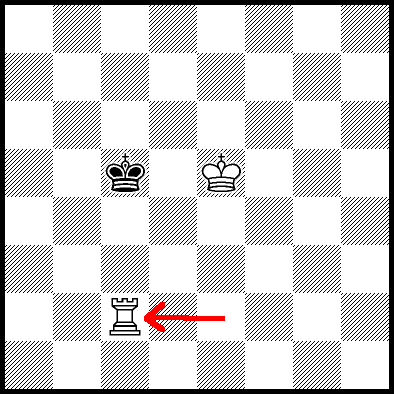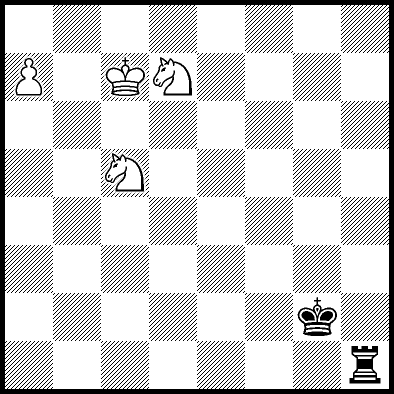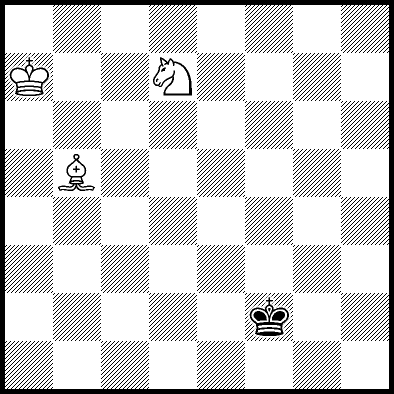
 |
| White to play: who wins? |
White is actually in serious danger of losing, because two connected passed pawns on the sixth rank can beat a rook. Luckily the two pawns are not yet on the sixth rank, but the only way for White to win is to concentrate solely on eliminating them.
1. Rf1 Kxa7
2. Kg7 Kb6
3. Kf6 Kc5
4. Ke5 e3
5. Rxf3 e2
6. Re3 Kc4
7. Rxe2 Kc5
Phew! But now White has to checkmate Black with only a rook. The checkmating plan is:
8. Rc2+
 |
| Push the Black king towards the side |
The rest of the game follows the checkmating plan.
8... Kb4
9. Kd5 Kb3
10. Rc8 Kb4
11. Rc7 Kb3
12. Kd4 Kb2
13. Kd3 Kb1
14. Kd2 Kb2
15. Rb7+ Ka3
16. Kc3 Ka4
17. Rb1 Ka5
18. Kc4 Ka6
19. Kc5 Ka7
20. Kc6 Ka8
21. Kc7 Ka7
22. Ra1#
 |
| Checkmate with king and rook versus king |
Actually, from any starting position, a king and a rook can checkmate a king within at most 16 moves. In practice it may take you longer, but remember that your opponent can claim a draw if you can't get checkmate within 50 moves.
 |
| Black to play: who wins? |
Black must play with some care to stop the pawn from promoting.
1... Ra1
This is the only move: 1... Rh8 allows the pawn to promote after 2. Nb8.
2. Kb7
The White king defends the pawn. What should Black do next?
2... Rxa7+
Again the only move: White was threatening to promote with 3. Na6.
3. Kxa7
 |
| Draw! |
 |
| Black to play: who wins? |
Again, Black must play precisely to stop the pawn from promoting.
1... Ra1
2. Kb7 Rxa7+
3. Kxa7
 |
| White wins |
But now White should win, because king, bishop and knight can force checkmate against a king. How it is done is beyond the scope of this lesson, but checkmate can only be forced in a corner square that the bishop can attack. That means there are only two squares on the board where checkmate can be forced. If you ever have to defend this, then you can allow your king to be driven to the wrong corner, safe in the knowledge that checkmate is impossible there.
With best play, checkmate with bishop and knight can always be carried out within at most 33 moves, but in practice players often fail to checkmate within the allowed 50 moves. If you are defending then remember to score the moves so you can claim a draw if your opponent cannot checkmate you within 50 moves!